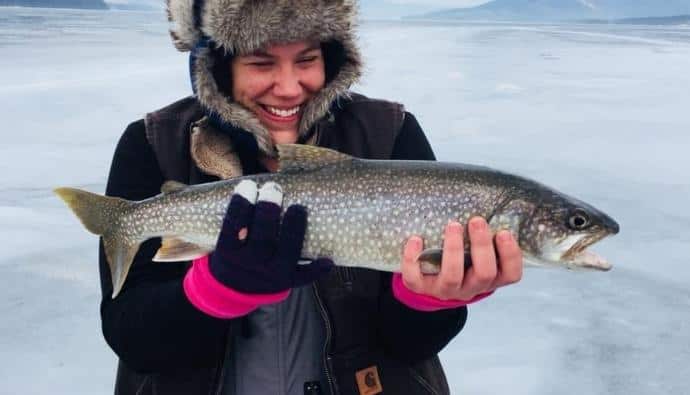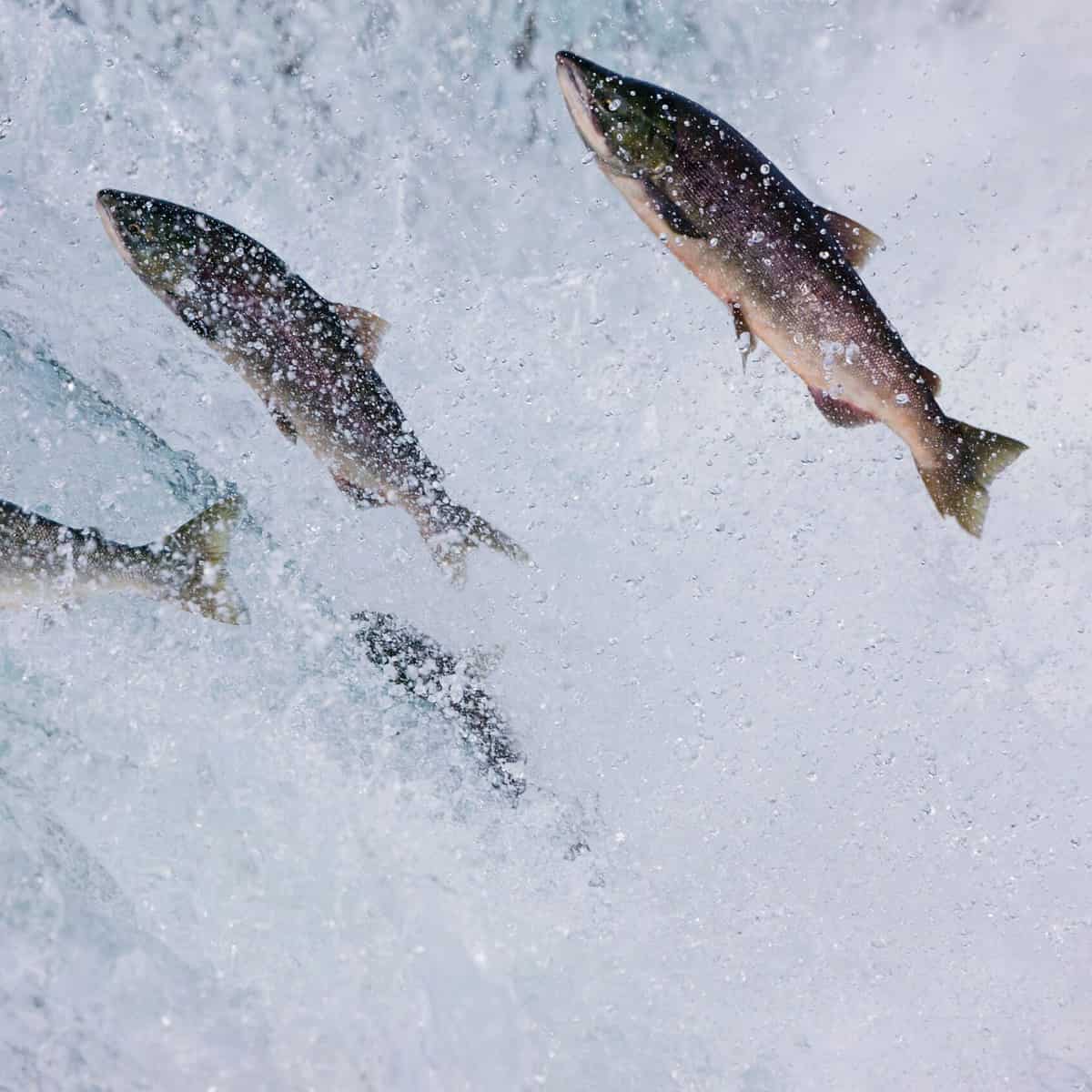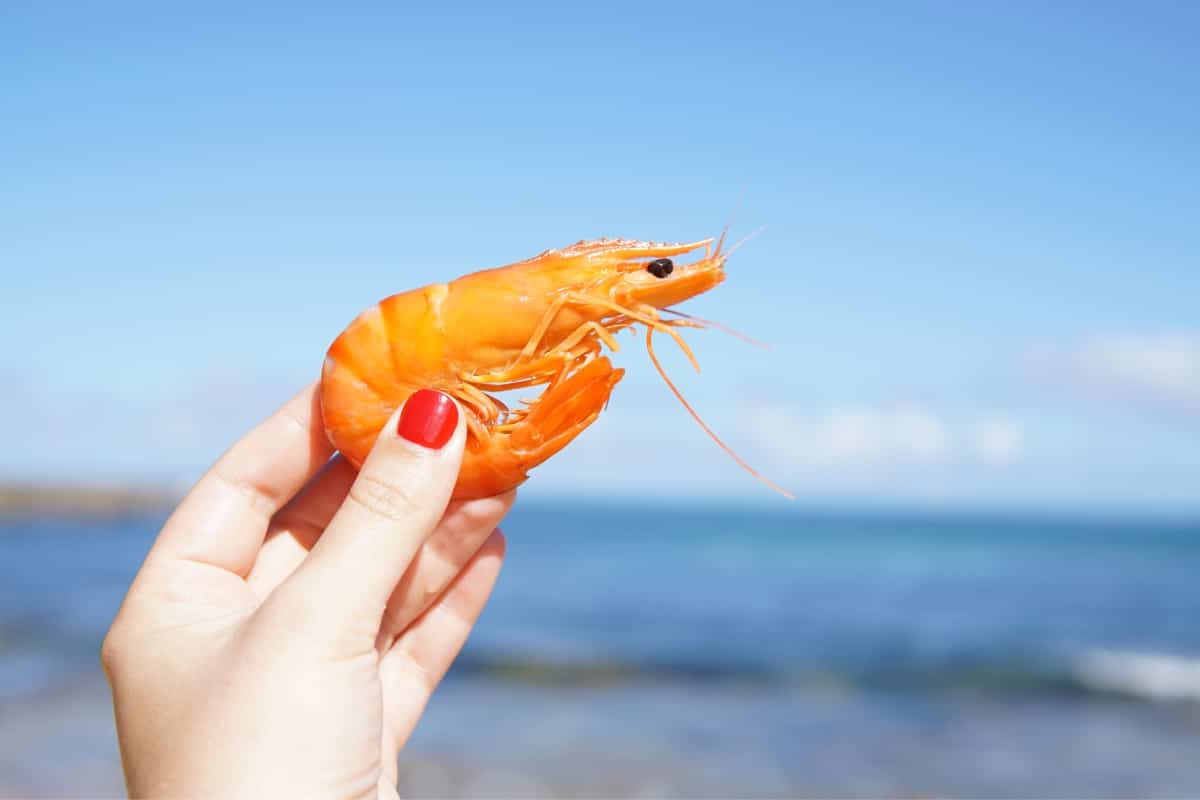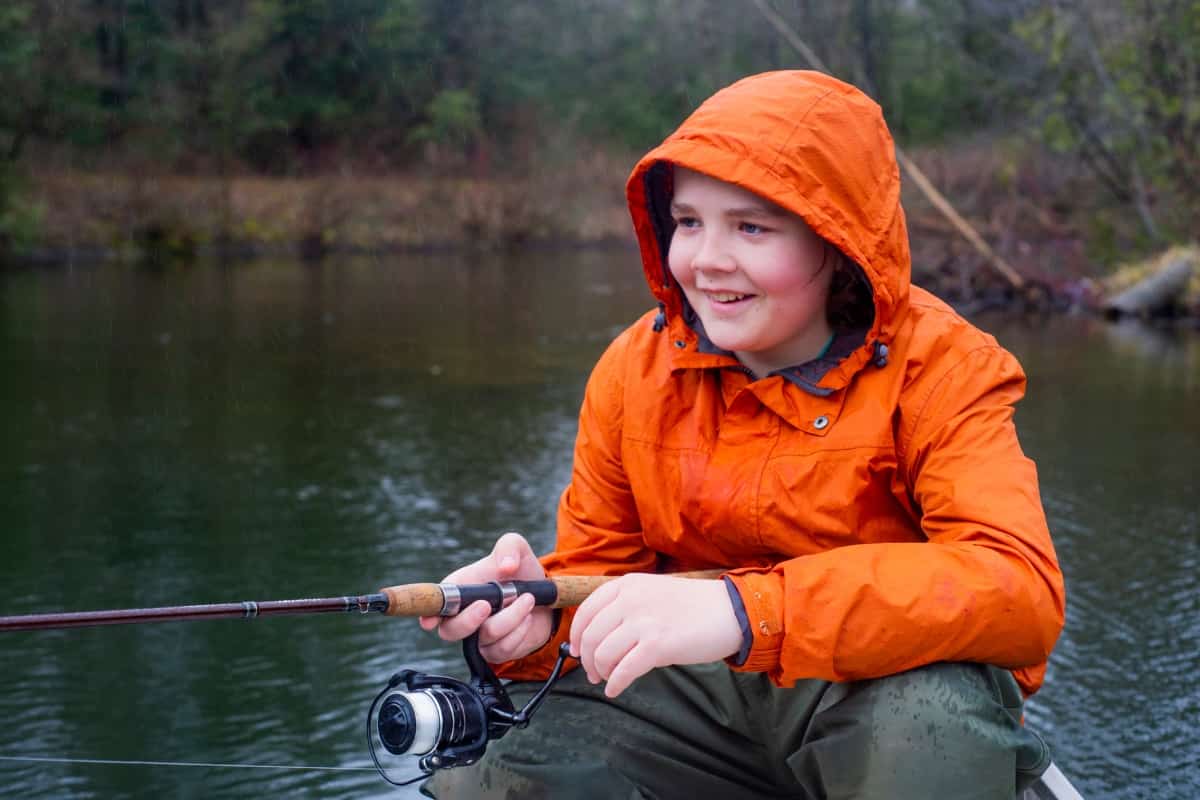Most anglers find it hard to catch big lake trout. Lake trout are often found in the deepest part of the lakes and reservoirs for most of the year. If you try fishing for lake trout during summer, you will probably go for hours and sometimes days without a strike.
They are easier to catch during winter than they are during summer. If you are a fan of ice fishing, you will want to understand how temperature affects their movement. Here is a look at how to ice fish lake trout.
Basic Biology About Lake Trout
Before diving into that, let’s look at the lake trout’s basic biology to understand how and why they love frigid water.
Lake trout are a cold water species that thrive in deep, clear, and cold lakes. They can only thrive in water temperatures between 40°F to 52°F, meaning they are found in deeper water during summers. Lake trout are top predators, and winter is their peak feeding season.
Giant Lake trout have yellowish or white spots on their light gray or dark green background and a deeply forked tail. It has a fatty fin that is often unique to the catfish, trout, and salmon families. Lake trout are also slow-growing and long-lived, with the oldest reported being 50 years old.
They are predominantly piscivorous and often feed on insects, crustaceans, and other small animals. You can often find them around the thickest concentrations of forage fish.

Where to Ice Fish Lake Trout
Lake trout are water predators and are often cruising over basins while searching for prey. They do not stay still once the temperatures cool down and have access to the whole lake. Lake trout are often found in packs looking for prey, often in deep structures such as points, submerged humps, and islands where they are baitfish.
Ice lake trout hunt in clear waters to easily spot their prey from a distance. They often feed on weed beds and yellow perch once they get to feed on the shallow-feeding fish. You can find lake trout anywhere around 15-foot shallows, healthy weed beds, and any other structure that makes a great habitat for perch.
You can use your bathymetric electronics map to find points of structure on the reservoir or lake. Here you will find smaller gamefish and bait fish in high concentration. These spots are often 10 to 80 feet of water and can often include saddles of shallow water between islands, underwater humps and boulder reefs, sunken points, and shallow bays.
Once you find any likely points, you can drill some prospect holes and look for the structures with an underwater camera, transducer, or fish finder. Do not look for the large lake trout but for large concentrations of smaller gamefish and bait fish. Hungry lake trout roam around their prey.
Ensure you drill your holes in a grip pattern or zig-zag so you can set up around the different structures and maximize your chances of catching the fish.
How to Ice Fish Lake Trout?
You can catch lake trout through active rod and rod jigging or via passive placement of a set line on a tip-up rig. When ice fishing lake trout with a tip-up rig, there is no use of a rod. Instead, you will use a tip-up apparatus where a reel is placed in the hole you drill, and when a fish unspools, the like a signal flag “tips up,” hence its name.
Here’s how to ice fish lake trout:
Using Tip-Ups
You can get tip-ups from any retail fishing shop or any bait shop. Once you lower the tip-up in the water, all you have to do is wait. A tip-up is also a great way to utilize second-line fishing, which is allowed while ice fishing in most inland waters.
If you are fishing as a large group, bring a whole minnow bucket and apply a strategy where you drill your holes and suspend the minnow in each hole. You might want to set up the tip-up at a 40-, 50- or 60-foot contour.
If you are fishing at a point that leads to a lake, you will want to place the tip-up at different lengths along the points and ensure that you fish within 20 feet of your tip-ups.
When a flag flies from the tip up, please avoid the temptation of running ice. Ice is slippery, and you could easily hurt yourself. Walk towards it and raise it slowly, ensuring you do not create much resistance and grasp your fishing line.
If you find that the fish is still swimming with the fish bait, you can set the hook with a quick snap of the wrist and arm. If 15 seconds have already passed and the fish is swimming slowly, or you can feel the dead weight on the line, you can set the hook then.
The fish may have dropped your bait if you cannot feel anything. Additionally, we do not recommend using a braided line since it can easily bite your skin if you catch a large fish.
Using a Jigging Rod
Many anglers use a jigging rod, but you can use either a medium-heavy or a heavy rod. Remember you are fishing with heavy baits and catching large fish weighing about ten to twenty pounds. Before dropping in, you bait, ensure you bait and jig it in the hole.
Learning how to make your minnow swim and dance delectably is also important. You also employ ice trolling as a great jigging technique.
Lake Trout Ice Fishing Tips, Tricks, and Techniques
Here are some tips and tricks that will make your ice fishing experience better:
Control the Line with Depth
While jigging your bait, ensure you work it through the water column and keep control of your line as you play out the slack line. Often, lake trout hits the bait, and you will only detect the bit when the line stops playing.
Set the Hook Hard
Lake trout have large and hard mouths. It is, therefore, vital to have sharp and hard hooks. You will soon realize that some lake trout will get lost at the hole since they are more aggressive than other types of fish. Some people often have a partner help land their fish by having a double hole.
Lake Trout Prefer White and Silver Baits
White and silver baits mimic lake trout, such as rainbow smelt, small trout, and ciscoes. You can use baits to mimic them, including jigs and tunes, jigging spoons, blade baits, airplane jigs, soft plastic swimbaits, and hard plastic baits.
State Fishing Regulations
It is common to find some lakes with special regulations that restrict harvest beyond certain stated regulations. You can check the regulation booklet to know the number of fish you can keep. While lakes with these regulations might let you keep fewer fish, their sizes will be huge.
Related Questions
What Are the Best Lake Trout Baits?
While fishing for lake trout, you do not need to be too particular with the bait you use as long as you keep in mind that you are ice fishing for lake trout. Large fish need large prey. Lake trout will often feed on fish that can fit in their mouth.
The best bait for large trout is often 6 to 10-inch-long, such as gold shiners and large suckers. Perch and sunfish will also work great if they are allowed for use in your state.
What Are the Best Lures for Lake Trout?
While bait is efficient in catching lake trout, lures are often more effective. Lures are flagrant and flashy and can easily trigger the lake trout’s attention, causing them to attack easily—some of the most effective lures include flash spoons and swimming lures.
Soft baits on jig heads are also very effective with lake trout, as with pike. A jig head can be used as the weight on the tube jig to create a tempting lure for a feeding trout.
If the lakers you are targeting are finicky about taking other bait, you can try using other lures like larger jigging raps tipps with deador live shiners or tube jigs.
What Equipment Should I Carry When Going Ice Fishing?
Some of the basic ice fishing equipment you should have includes:
- An auger for drilling a hole
- Reel, rod, lure, or live bait
- Scoop to remove the slush and ice from the hole
- A chair and a plastic bucket to sit on or a pop-up fishing shelter
- Warm boots and clothes
What Is the Best Time to Go Fishing for Lake Trout?
Winter is to lake trout, as summer is to perch and walleye. For most anglers, catching a huge fish is the biggest motivation for every fishing trip. While we all want to go fishing during most ideal conditions, we always keep it in our minds that we want to catch a monster.
When ice fishing, you are guaranteed to catch a large lake trout. It makes it easier to stand the winter cold because it will all be worth it.
Conclusion
While lake trout is an exciting species for anglers to target, they are often overlooked. They are easy to strike with the right equipment and know-how and are a real pleasure to catch while on ice for their size and strength.



 Facebook
Facebook YouTube
YouTube









